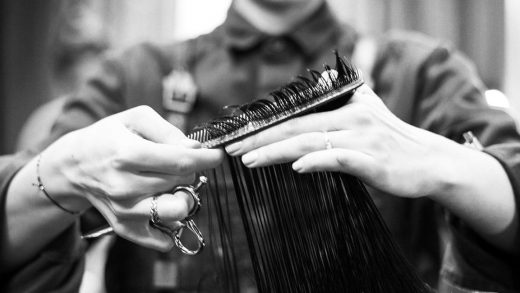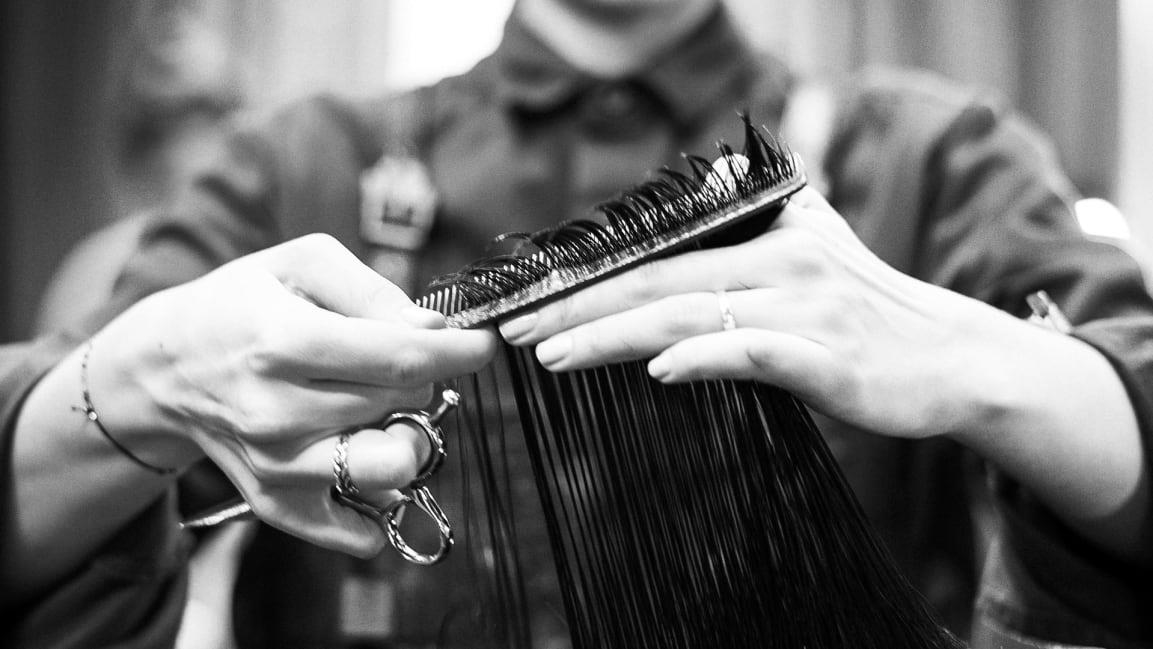Virtual class was a devastating blow to trade school students
Mark Chaney hates that the pandemic has forced the Buckeye Hills Career Center in Rio Grande, Ohio, where he teaches to still have a schedule with students in school only part time. That may work for English and math classes during the pandemic, he said, but his students are trying to learn physical skills, not just intellectual ones. They need to handle, build, and take apart pipes, ductwork, and breaker boxes every day, not spend half their week doing online work at home.
“Nothing against academics at all,” he said. “For an academics high school, I can see (online lessons) could happen. But an actual trade? Where you’re doing hands-on work? They’re missing out.”
The COVID-19 pandemic has disrupted schools across the country, raising concerns about “learning loss.” For students trying to learn a trade like carpentry, masonry, or welding, that loss is compounded.
School shutdowns and student quarantines of COVID-19 often choke off the hands-on learning that is the lifeblood of their programs. They lose practice in front of teachers. They lose repetition that increases their speed. And lost hands-on learning then can cost students the hours they need to qualify for state licenses for work after graduating. Adding to Chaney’s frustration, it also wiped out the way many CTE [Career and Technical Education] students learn best.
“They do not like that sitting environment, the paper and pencil and writing,” he said. “They can’t comprehend that. It’s just like me. Everything I do with my hands, that’s how I comprehend everything, so that’s what they’ve got to do.”
The pandemic has sent teachers of trades across the U.S. scrambling to find ways to somehow fill that gap when students can’t be in the classroom. That has meant finding online lessons created by companies to train their employees, then adapting lessons for students.
For Sara Plozay, a cosmetics instructor at Upper Valley Career Center in Piqua, a small city north of Dayton, Ohio, it meant having students cut hair on mannequin heads at home, taking pictures, and emailing them to her. Or cutting the hair of their mother or siblings. Over and over.
“When students come to a career center, they come to learn a specific career field that provides hands-on training,” Plozay said. Although her school had just a single quarter of part-time classes at the start of the year, it cost her students dearly. “When you don’t have that, you’re really challenged.”
Chaney held off having students take apart the furnace or kitchen sink at home (“We’d get into liability issues,” he said, laughing. “I’m not allowed to do that.”) and instead had students spend time measuring items, planning projects, and pricing them, just like quoting an estimate to a customer.
And for automotive technology classes in Akron, Ohio, where high schools were closed until March, teachers gave every student a quarter-size model of a V-8 engine to build at home, with video lessons at each step. “We obviously could not send an engine to every student’s home, along with the tools, so we kind of came up with this idea,” said Eric Frantz, one of the district’s two automotive instructors, who helped find the models online for about $70 each.
“I learned the best I could with the model,” said East High School senior Kyrice Brunson, who pushed aside extra blankets and pillows on his bed before dumping all 270 pieces out to start work. “[I learned ] the inner-working of the engine and just how it functions in general. . . . That was probably the most hands-on tool we could have had while at home.”
The engine now sits on a bookcase in his room along with athletic, band, and ROTC trophies and awards.
But teachers from multiple schools all concede that their best efforts couldn’t replace in-person training. “It’s definitely not the same,” said Plozay.
The full impact of the pandemic for these students, as well as on a key part of keeping the national economy healthy—the normal pipeline of trainees in these fields—is still not clear. But a recent report from the Association for Career & Technical Education (ACTE) estimated that students nationwide lost a great amount of class time: By January, when many schools nationally were starting to open, ACTE estimated that only about a third of CTE schools nationally were fully open. The rest were open only part time or not at all.
An ACTE survey of teachers and administrators found that their biggest worries, by far, were finding enough training hours for students and not letting morale and student engagement suffer.
ACTE also reported some worries, though still with little data yet to back them up, that students are lagging in earning career credentials.
In Ohio, for example, that data won’t start rolling in to the state until summer to show up on school report cards in the fall. Last year’s credentialing data didn’t tell a clear story, since the pandemic school closures didn’t happen until mid-March and students had already banked training hours earlier in the school year.
“It really has been so different,” said Jesstin Foust, an industry relations manager for the Great Clips hair salon chain. “There’s going to be more training necessary. It’s not that the schools aren’t doing their part. They’re doing everything that they can.”
The pandemic has also affected vocational skills competitions, like Skills USA and others, that allow students to compete statewide and nationally, show off what they’ve learned, network with other students, and meet recruiters for businesses looking for new workers.
Ohio’s Skills USA statewide finals, canceled last year because of COVID-19, are normally a celebration of career training that draws 6,000 students, parents, teachers, and industry recruiters to the Greater Columbus Convention Center each spring for more than 100 competitions. It returned this year in a smaller form, with more than one-third fewer students thanks to schools banning field trips during the pandemic or banning visitors at sites that normally host regional contests.
Other schools were closed so long that they did not have students enter. Though students in some Akron CTE programs entered, no automotive students did. The Cleveland School District entered no students at all, both because of safety concerns about competing and a lack of practice because district high schools did not open their doors until late March.
Some state competitions were done by video in students’ home schools. Others were spread out over several weeks in 22 sites scattered around Columbus, so that only a few students would be in one place at a time. Those were hosted by nonprofits, trade unions, or companies like Great Clips or Nationwide Insurance that offered their employee training centers to the competition.
For plumbing, for example, state finals had three competitors instead of the 15 or more in a typical year, building the PVC piping for a shower sink and toilet that would go under a bathroom, all under a time limit. Ryan Hammond, a student of Chaney, completed his project in time, but knew that his pipes didn’t slope the way he wanted. More practice at school would have helped, he said.
“If I had been there five days a week, I’d be able to do that perfectly,” he said.
There’s one silver lining to all the time students spent online, though. All the background students need has already been covered, so they can go right to doing projects in their limited time at school.
A month after returning to the classroom, teachers already have Brunson and his East High classmates rapidly dismantling and rebuilding full V-8 engines from cars. “Since coming back, I think we’ve been sitting at a desk for maybe an hour total,” Kratz, one of two automotive instructors, said. “It has been taking attendance and heading straight to the lab to practice everything we did online.”
This article was also published at The74Million.org, a nonprofit education news site.
Fast Company , Read Full Story
(27)



